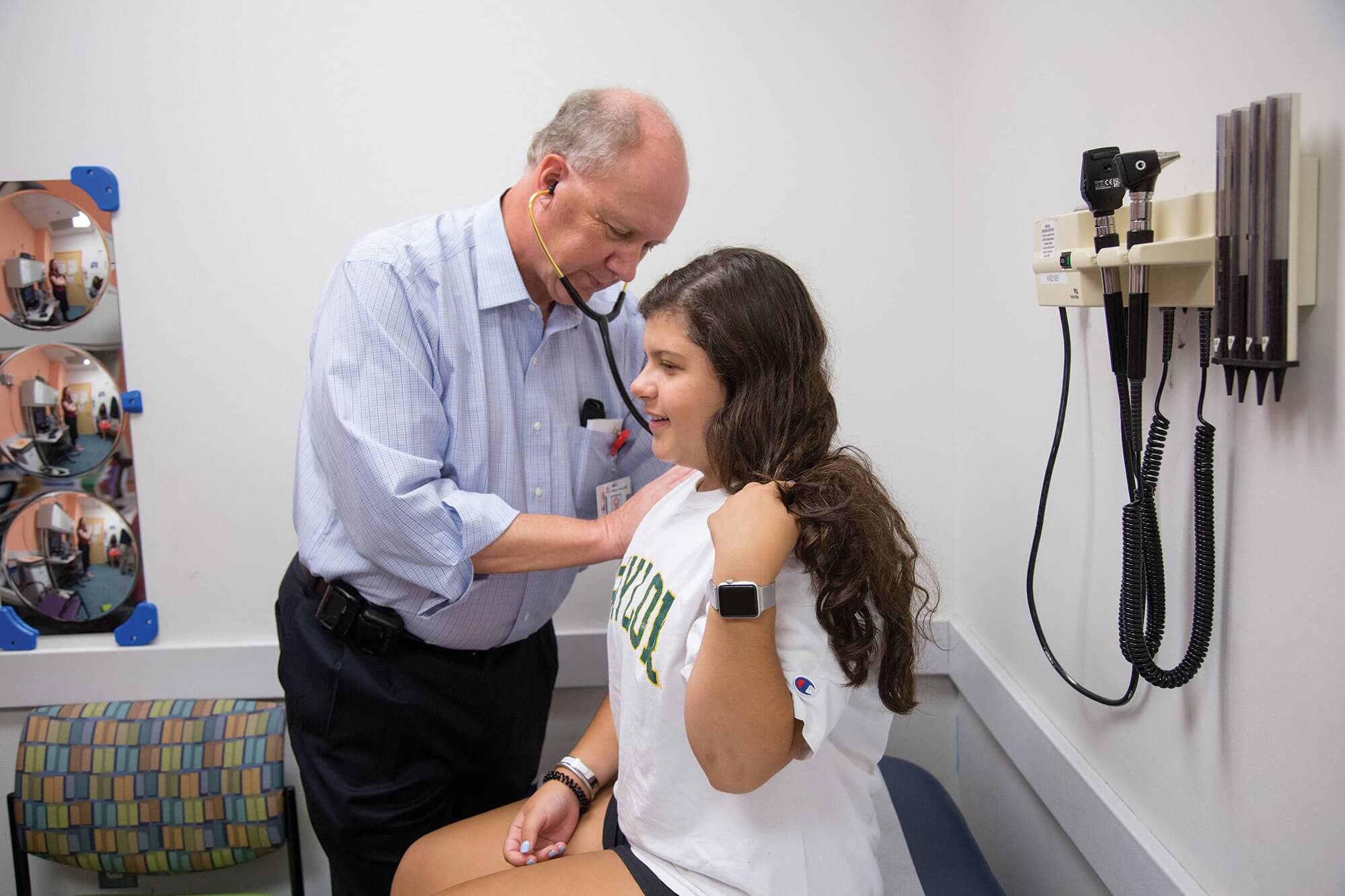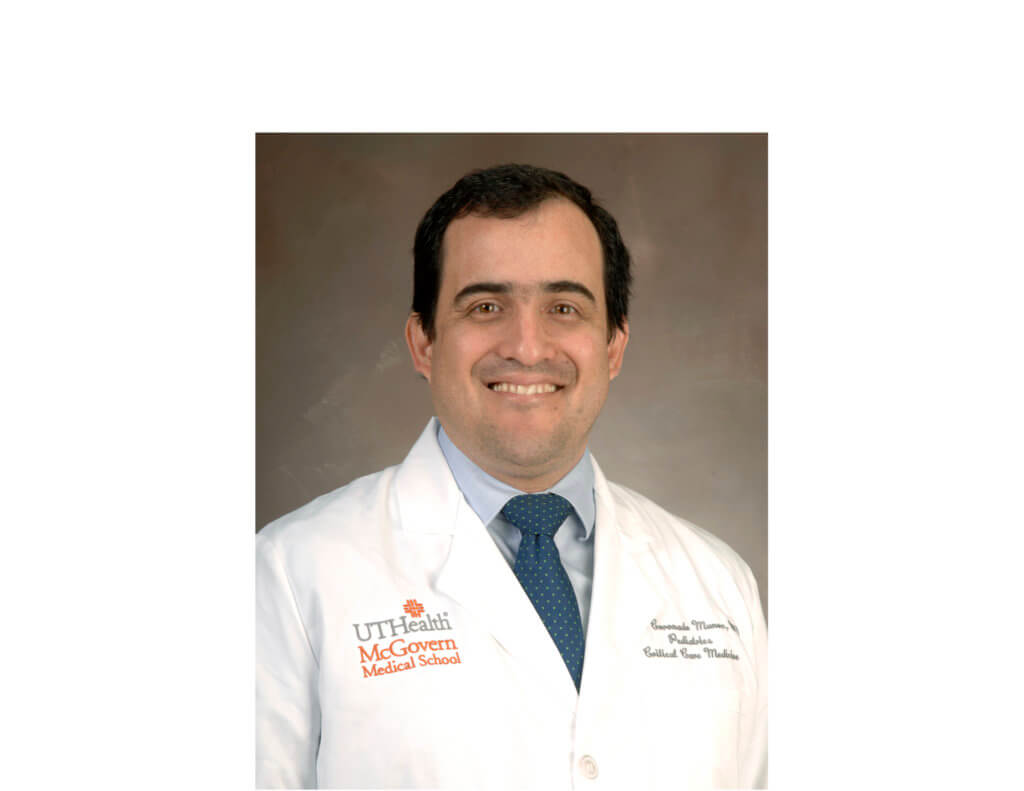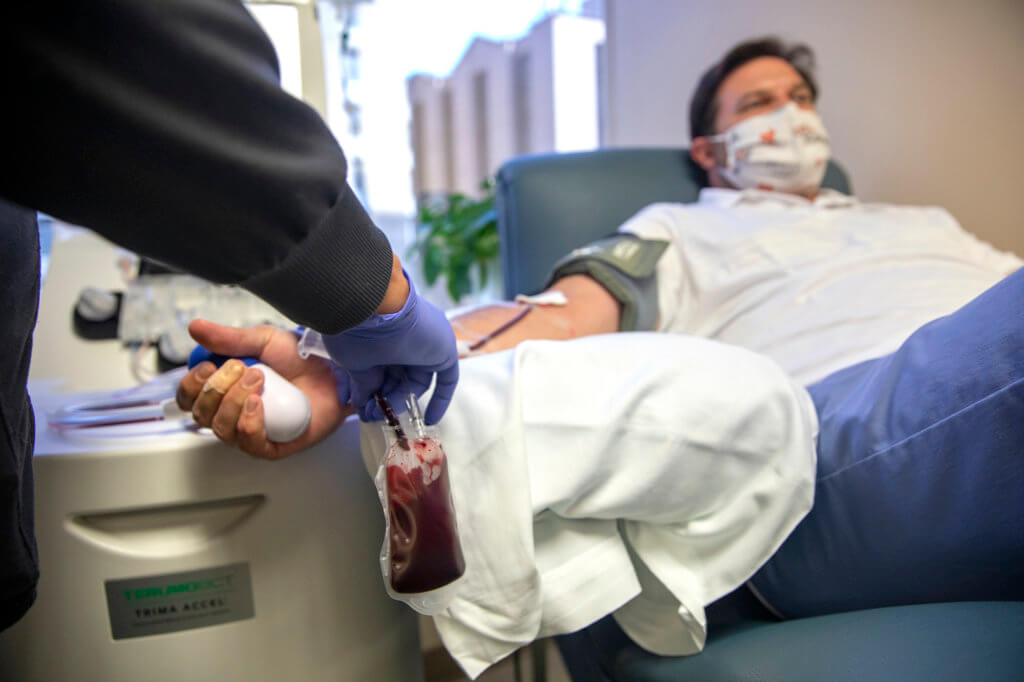Facing TB in Houston

Sitting on the porch of her home in Houston’s Sunnyside neighborhood, Lila White loves nothing more than watching the cars drive up and down Scott Street and seeing what her neighbors are up to.
This time last year, the porch was her only respite from the isolation imposed by the health department after she tested positive for tuberculosis.
White, 57, landed in the emergency room at Ben Taub Hospital in July 2016. She thought she was dying. Normally a trim 115 pounds, she was down to an emaciated 99. Short of breath and unable to sleep, she had seen several doctors over several months, none of whom had diagnosed her properly. But when the ER doctors at Ben Taub examined her chest X-ray, they knew.
White remained in the hospital for nine days, her bed wrapped in plastic to keep her from infecting other patients. When they sent her home, it was with strict instructions.
“I had to stay in my house for about two months,” White said. “I was glad to be out of the hospital and back at home. Most of the time I stayed in my room. I might come out and sit on the porch, but I had to wear a mask at all times.”
An ancient ailment
Tuberculosis (TB) is an infectious disease that usually affects the lungs but can travel to other parts of the body. It is caused by bacteria that spread through the air when individuals with active TB cough, sneeze or spit. Although it is an ancient ailment—one study published in the journal Nature Genetics shows that TB originated in Africa some 70,000 years ago—it remains difficult to diagnose.
Not everyone infected with TB becomes sick. People with latent TB infection do not feel sick, do not have symptoms and cannot pass the disease to anyone else, according to the Centers for Disease Control and Prevention. One third of the world’s population carries the infection; of that group, roughly 10 percent will go on to contract the disease.
If left untreated, though, TB can be deadly. Cavities can form in the lungs that bleed or fill with pus, blocking airways and making it difficult to breathe. Individuals most vulnerable to TB are those with weakened immune systems, which means people with cancer, hepatitis C, HIV/AIDS, diabetes and individuals who have received organ transplants. Also at high risk: those who live in poverty or use tobacco.
TB causes permanent damage to the lungs and can spread to other parts of the body through a process known as dissemination.The worst cases of disseminated TB are those that spread to the bones. Once this happens, the disease becomes extremely difficult to treat and can cause permanent disability.
“I always say, tuberculosis loves human misery,” said Jeffrey Starke, M.D., a professor of pediatrics at Baylor College of Medicine and a staff physician at Texas Children’s Hospital, where he also runs a tuberculosis clinic. “TB goes up during war, famine. Anything that stresses the human condition tends to lead from the progression of TB infection to TB disease.”
In May, four cases of active TB were confirmed at George Bush High School in Fort Bend County.
“These things always happen at the end of the school year— always,” Starke said. “It is the rule of least convenience.”
Although Fort Bend health officials won’t discuss details, Starke explained what typically happens in an active TB investigation.
“The way they do these investigations is called concentric circles,” Starke said. “We start with the patients and the characteristics of their disease and their relationships with other people. Usually the first circle is whether or not TB was transmitted in the home. Then we interview the patients and their families and find out what the next circle might be.”
Every year in the Houston area, roughly 400 people test positive for TB, according to Starke. Because of this, health departments must launch roughly 400 investigations every year.
“Think about what that means in households, places of work, schools and how sensitive this is,” Starke said. “The letter that goes out can’t state the person’s name because of privacy concerns. It just says: ‘We believe you may have been exposed to TB.’”
Harris County’s TB rate is more than twice the national average: 7 cases per 100,000 people. In the United States as a whole, the average is 3 cases per 100,000 people.
“If you look at the diversity of our population, it’s not surprising,” Starke said.
Of the roughly 1 million people who immigrate to the United States legally each year, around 30 percent have TB infection, Starke said.
“They are immigrants, they are vulnerable, they don’t have health insurance, they don’t have medical homes, so how do you find them? How do you test them? How do you get them treated? That’s the problem and we have no good mechanism for doing that.”
‘It’s a crappy test’
Although TB is preventable, treatable and curable, it is one of the top 10 causes of death worldwide. According to the World Health Organization, TB kills close to 1.5 million people annually.
Traces of the disease, known for centuries as consumption, have been found in the remains of Egyptian mummies. TB claimed the life of 19th-century English poet John Keats, at a time when the “white plague” was rampant and romanticized. Eleanor Roosevelt died from complications of TB.
Perhaps because it has been around for so long, many people assume TB has been eliminated.
“When my wife and I got engaged, her father asked what I do and she said, ‘Well, he takes care of kids with TB,’” Starke said. “Her father looks at her and goes, ‘Well, he doesn’t have a future.’ And that was 38 years ago. Most people think it is gone, but there are still 10,000 cases per year in the U.S.”
TB kills more people every year than AIDS, though the American public sees and hears much less about it. It takes high-profile cases—like the high school students in Fort Bend County—to pull the disease out of the shadows and into the news cycle.
For White and her partner of 27 years, Patricia Johnston, the diagnosis was shocking.

Lila White, left, with her partner Patricia Johnston in the kitchen of their home in Sunnyside. (Photo by Scott Dalton)
“I call her ‘doctor freak’ because she just loves getting up and going to the doctor,” Johnston said of White. “She’s always telling me, ‘You gotta take care of yourself.’ And that’s why I don’t understand how she got so sick. She had been going to the doctor for two years to see what was wrong and they told her it was cancer because of the damage on her lungs. But it wasn’t.”
At Ben Taub Hospital, White was treated by Elizabeth Guy, M.D., medical director of pulmonary clinics at the hospital and an assistant professor of medicine at Baylor College of Medicine. Guy was surprised Smith wasn’t diagnosed sooner.
“She had developed some lung lesions we were investigating and, in fact, we could not prove that she had latent TB at some point in the past,” Guy said. “It seems like she must have had it, but our tests are quite imperfect and did not pick up on it.”
A chest X-ray and a sample of sputum (phlegm) are needed to determine whether a person has active TB. A positive TB skin test
or TB blood test only shows that a person has latent TB infection. Misdiagnosis is all too common in the world of TB. Testing is
antiquated and unreliable.
“The skin test is a bump on the arm,” Starke said. “It’s a crappy test.”
The skin test, which dates back to the 19th century, involves injecting TB protein (antigens) under the top layer of skin on a patient’s inner forearm. If the patient has been exposed to TB, a firm red bump develops within 48 hours.
“We used to do medicine by reading bumps on people’s heads—phrenology—and that was in the Dark Ages,” Starke said. “It’s a horrible test. It’s hard to place, hard to read. It takes special expertise and people are bad at it.”
Even if a skin test is administered and read properly, it can take six to eight weeks after a person is exposed to TB for a positive infection to be identified.
Moving toward early detection
Jeffrey Cirillo, Ph.D., a professor at the Texas A&M Health Science Center College of Medicine and director of the Center for Airborne Pathogen Research and Imaging, has been working on a rapid diagnosis test to detect active TB in real time. Still in clinical trials, the TB REaD takes a sample of sputum from the regularly administered test and mixes it with a chemical compound that allows Cirillo and his team to spot the bacteria in a matter of minutes. TB REaD delivers a diagnosis of positive or negative in about half an hour.
“Worldwide, people don’t get diagnosed until they’ve already transmitted the infection,” Cirillo said. “The idea would be to detect them very early on when they first visit a clinic. The process of testing has been an issue because no one had a method for sensitively detecting tuberculosis during the early stages of the infection.”
Cirillo and his team have worked to detect the infection when the bacteria is very low. Compared to the smear or sputum test, which has a threshold detection of 10,000 bacteria, the TB REaD test produces results by detecting as few as 10 bacteria in roughly 10 minutes, according to Cirillo.
“It’s almost like magic,” Cirillo said. “Many people don’t believe you can detect that few bacteria in that short of time, but it all comes down to the fact that the enzyme is so robust and you get reaction from the bacteria being alive.”
Once White’s TB diagnosis was confirmed, she began the long journey toward regaining her health.
Because TB is a respiratory infection that travels through the air and can be highly contagious, it is considered a matter of public health. After White was diagnosed, a public health investigator from the Houston Health Department was assigned to her case. City health officials require any individual with active TB remain in isolation until they are no longer a threat to public health. When is that? Once the individual has received three consecutive negative sputum tests.
In addition to isolation, White was placed on an intense antibiotic treatment plan.
“I was so little to take all of those pills,” said White, who is 5-foot-4 and weighed 99 pounds when she returned home from the hospital. “I was taking nine pills a day, seven days a week, and I couldn’t handle what my body was going through.”
The TB treatment plan is intense and time-consuming— lasting three months to one year for most patients. Because of this, directly observed treatment has been implemented for TB patients across the country.
Directly observed treatment, short course, or DOTS, is defined by the World Health Organization as a specific strategy to improve adherence to TB medication by requiring health workers, community volunteers or family members to observe and record patients taking each dose.
White’s community health worker, Berta Perez, senior public health investigator for the city of Houston, came to her house every day for eight months and then every three days to deliver her medication and physically watch White take it. As an added precaution, the health department also requested White’s partner and her son undergo an antibiotic regimen.
“In the United States, we use directly observed treatment, but that comes at a high cost,” Guy said. “In other countries where there are not as many resources, people go to a central location to get their medicine and usually once they start feeling better, they stop going.”
‘Assume they are infected’
Starke’s tuberculosis clinic at Texas Children’s is a microcosm of the city of Houston. Held regularly on Tuesday and Friday mornings, the clinic welcomes all children—whether they are from Sunnyside or Somalia.
“We also started doing something at Texas Children’s many years ago,” Starke said. “If we have a kid show up who might have TB, we do immediate chest X-rays on the parents, at our expense. The idea behind it is, if the child really has TB, he or she got it from someone and it is likely somebody close to them.That person might not have been diagnosed yet,and it might even be a parent.”
The results of this new procedure were astounding. Initially, they found that 15 percent of adults accompanying the children to the hospital had undiagnosed TB disease, according to Starke.
In the United States, it has been common practice to require family members and people residing in the same household as an infected person to begin antibiotic treatment—much like White’s family did once she was diagnosed.
“For 40 years, the World Health Organization has said the following: if you have Uncle Eddie at the house, look at all the kids in the house less than five,” Starke said. “If they’re sick, go get them diagnosed. If they are well, give them six months of Isoniazid. In other words, treat them for TB infection. Even if you don’t give them a blood or skin test, assume they are infected and treat them.”
Despite this long-standing recommendation, high-burden countries are just now beginning to comply, Starke said. China and India have been labeled high-burden because their rates of TB are 30 to 50 people out of 100,000, accounting for one-third of the world’s TB.
“It’s been a resource issue, but now they are starting to wake up to the fact that, oh wow, we can prevent a lot of this with pretty simple, easy and cheap measures,” Starke said.
Like White, though, many people do not know where or how they contracted the disease.
“Right before I was diagnosed with TB, I found out I had hepatitis C,” White said. “And after I had TB, I found out I had diabetes. … My whole body started breaking down.”
Starke said TB is a question of bulk and degree.
“There are just that many people who are infected who go on and develop the disease,” he said. “If the world suddenly got smart and woke up and decided it wanted to go out and find people who had the infection and treat them so they wouldn’t develop the disease, which is particularly true for children, we could very rapidly knock down the number of people developing the disease.”
In addition to finding an effective vaccine, the real breakthrough for care would be identifying patients with TB infection— diagnosing and treating them before it spreads.
“I think one of the themes here, if you will, is that the face of TB is changing,” Starke said. “The Texas Medical Center, including Ben Taub, may take care of more TB patients than any other single health facility in the United States. We have tremendous expertise here and there is a rich history of care going back decades.”
During her last visit with Guy, nearly one year to the day of her diagnosis, White found out she no longer needed to take her tuberculosis medication. She was, for all intents and purposes, cured.
Although she will always have scars on her lungs, White is enjoying the fact that she is free of TB and can go back to doing some of her favorite things—fishing, going on long walks and enjoying Johnston’s home cooking.
“I have a life now,” White said. “I think we are going to celebrate. Go pig out—maybe have some rice and beans and oxtail and go swimming in my pool.”











